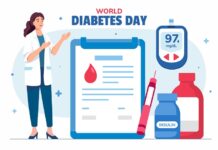Researchers have developed an open-access Indian Nutrient Databank (INDB) containing detailed information on the nutrient composition of individual food items and commonly consumed recipes. Funded by the Bill & Melinda Gates Foundation, the study is published in the journal Current Developments in Nutrition.
Food composition databases are essential for diet assessment, helping users estimate their daily nutrient intake, monitor deviations from recommended intakes, and adhere to dietary guidelines. Such databases are crucial for advanced nutritional research and policymaking.
The Indian Council of Medical Research-National Institute of Nutrition (ICMR-NIN) previously estimated the nutrient composition of hundreds of raw food items, including them in the Indian Food Composition Table (IFCT) available since 2017. The IFCT provides nutrient values for eight micronutrients and 528 raw food items, which collectively contribute to 75% of energy, fat, and protein intakes at the population level.
The INDB was developed in two stages. Initially, the nutrient composition database of raw food items was compiled from the 2017 and 2004 IFCTs, covering 528 and 369 raw food items, respectively. The UK Food Composition Table supplemented the database for missing energy values of some raw items.
In the second stage, a database of 1,014 commonly consumed Indian recipes was developed, including details on ingredient amounts, total recipe weight, number of servings, and serving sizes. Sensitivity analysis adjusted for cooking-mediated nutrient loss using data from the USDA Table of Nutrient Retention Factors.
The final INDB comprises 1,095 raw food items and 1,014 recipes. Nutrient retention after cooking varied, with the highest retention observed for calcium and zinc, and the greatest loss for vitamin C, potassium, and phosphorus. Overall, cooking caused significant but small reductions in nutrient values.
Comparisons between the INDB and the UK Food Composition Table showed non-systematic differences in nutrient values for similar composite dishes, attributed to variations in ingredient nutrient composition, recipe differences, and laboratory methodologies.
The INDB provides a valuable resource for researchers, government, and private organizations to estimate nutrient intakes in India and inform interventions to combat malnutrition. However, the study did not account for temporal changes in nutrient content or variations based on food production locations, potentially leading to misestimation. Additionally, the absence of nutrient values for packaged foods is noted as a limitation.
As reported by News Medical, future plans include correcting cooking-mediated nutrient loss or gain and incorporating more regional dishes into the INDB. The analysis codes and files are publicly available on GitHub: github.com/lindsayjaacks/Indian-Nutrient-Databank-INDB.
























